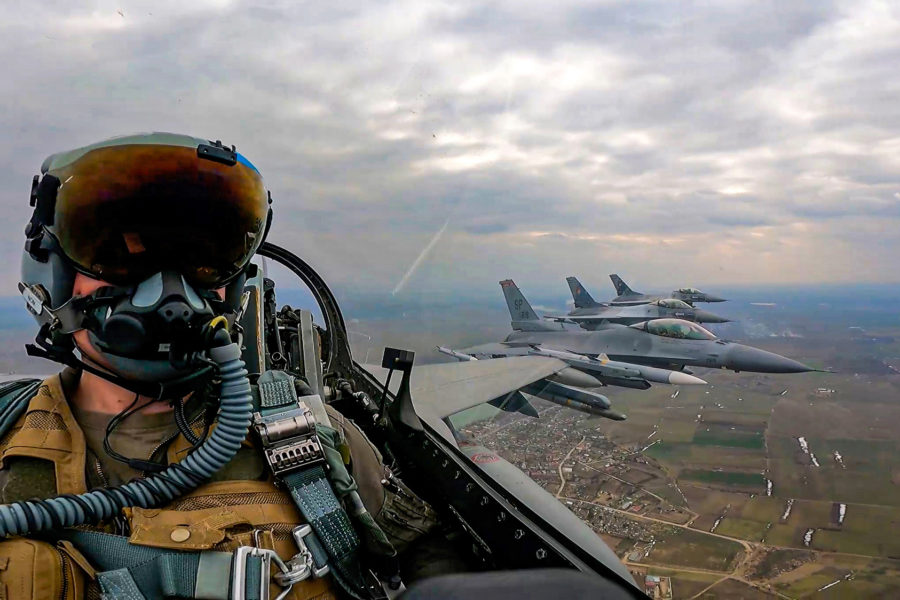Lockheed Martin, partnering with Romania and the Netherlands, will set up an F-16 training facility in Romania, the company announced Aug. 31. The schoolhouse may eventually train Ukrainian pilots and other regional users of the fighter.
The company and two countries signed a “letter of intent” for the schoolhouse, which will initially focus on training Romanian pilots. The planned location of the training facility was not immediately disclosed.
Romania has 17 of the fighters and is set to receive 32 additional F-16s from Norway after refurbishment. Romania is also in the process of requesting 32 to 48 F-35 fighters from the U.S., also built by Lockheed Martin.
However, a Lockheed spokesperson told Air & Space Forces Magazine that “Royal Netherlands Air Force (RNLAF) F-16s will be used for training purposes” at the new schoolhouse. The establishment of the facility is a “commercial arrangement with the support of the U.S. commercial licensing process,” she added.
The F-16 “continues to play a crucial role in 21st century security missions” for the U.S., Europe, NATO and other allies, Lockheed integrated fighter group vice president O.J. Sanchez said in a statement
The new facility will provide “a comprehensive F-16 training solution for Romanian pilots,” he added. “Once details are finalized, we are confident the training center will ultimately benefit Romania and other regional F-16 operators, including potentially Ukraine.”
Other European users of the F-16 include Belgium, Greece, Norway, Poland, Portugal, and Turkey—several hundred in total.
Sanchez told Air & Space Forces Magazine in an early August interview that Lockheed has a “firm backlog” of 126 orders for new F-16s, which will be produced at its Greenville, S.C. facilities at a rate of about 48 airframes per year by 2025. He said there are more than 3,000 F-16s operating worldwide and there remains “strong demand” for the fighter. The 126 figure he cited does not include India, which is considering an F-16 Block 70 Lockheed has rebranded as the F-21.
Denmark, the Netherlands and Norway have collectively pledged to donate more than 60 F-16s to Ukraine, which continues to fight off Russia’s full-scale invasion, and the U.S. has agreed to expedite the third-party transfer and provide F-16 training materials. Some Ukrainian pilots are receiving language training in the U.K. and the U.S. prior to an F-16 training program at Morris Air National Guard Base, Ariz., where most foreign military sales F-16 pilots receive instruction.
“The efforts in Tucson, Ariz., are complementary to European efforts to ensure capacity and accommodate the blossoming need for F-16 training in Europe,” the Lockheed spokesperson said.
Earlier this month, U.S. Air Forces in Europe commander Gen. James B. Hecker said Ukraine would not get a basic F-16 capability until 2024, although other countries were promoting the idea of Ukrainian pilots flying the jet in the war against Russia by the end of this year. Hecker warned the jet will not be a “silver bullet” that will suddenly turn the tide in the 18-month-old war. Rather, the jet will simply be “more interoperable” with air-to-ground weapons the U.S. and other countries are already providing to Ukraine than those weapons are with Ukraine’s Russian-design MiG-29s and Su-27s.
An industry source said, however, that if the Ukrainian pilots have access to a nearby training facility—such as in Romania—then fewer of the jets Ukraine receives will have to be set aside for training, meaning more will be available for combat.
